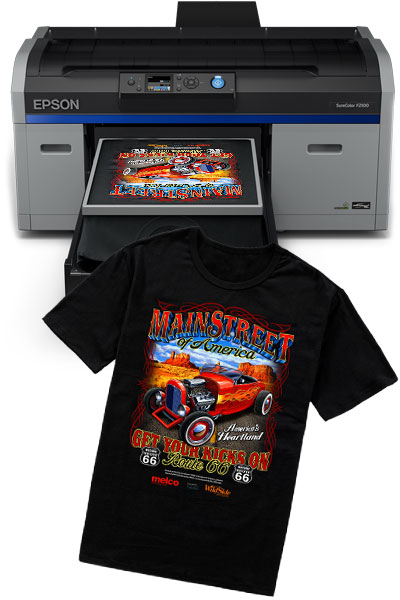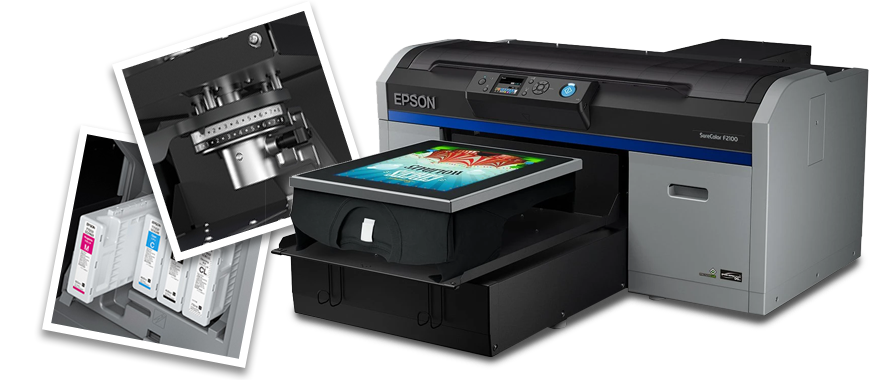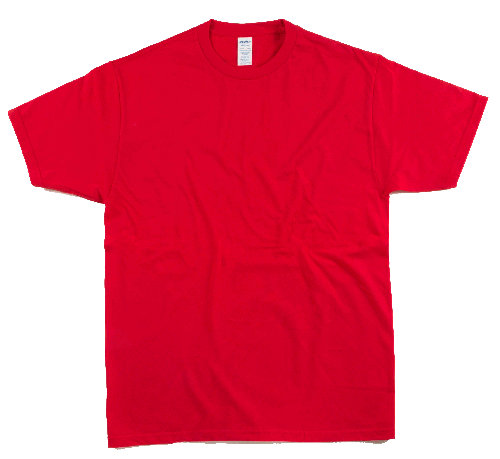5 Key Elements For A Successful T-Shirt Printing Business
1. The Right Process
In today’s garment decoration world, screen printing and heat transfers have become limited, while direct to garment (DTG) printing offers the flexibility and diversity required for every modern t-shirt printing shop to stay competitive. Keep reading to learn how to start a T-shirt printing business.
Reorders: Screen printing and heat transfers can be a challenge due to time-consuming setups, which may lead to turning customers away or reluctantly setting up the press again. However, with DTG printing, you can quickly fulfill reorders with little to no setup time.
Short runs: The demand for one-off custom t-shirt designs has increased, and with a DTG printer at your disposal, you can compete with online manufacturers like CafePress and Zazzle and capture the bulk of local business. You can also offer “No Minimums,” which is not something many competitors can offer.
Samples: When scouting new businesses, providing samples is an effective way to make an impact. DTG’s easy setup allows you to create custom, high-quality samples that can help you secure those crucial accounts.

Reorders
Screen printing and heat transfers can be a challenge due to time-consuming setups, which may lead to turning customers away or reluctantly setting up the press again. However, with DTG printing, you can quickly fulfill reorders with little to no setup time.
Short runs
The demand for one-off custom t-shirt designs has increased, and with a DTG printer at your disposal, you can compete with online manufacturers like CafePress and Zazzle and capture the bulk of local business. You can also offer “No Minimums,” which is not something many competitors can offer.
Samples
When scouting new businesses, providing samples is an effective way to make an impact. DTG’s easy setup allows you to create custom, high-quality samples that can help you secure those crucial accounts.
2. Powerful Equipment
When it comes down to it, the equipment you choose can make or break your business. But with all the available options, how do you know what t-shirt printing equipment is the best?
Rather than get hung up on special features and technical modifications, you need to find a well-made t-shirt printer that can reliably do the job it’s intended to do.
We recommended the Epson SureColor F2270 for these reasons, and many more:

3. High-Quality T-Shirts
When it comes to creating the ultimate finished product, not all t-shirts are equal. For the best results, it’s essential to use t-shirts made with thick and tightly-woven (ring spun) material and a cotton blend ratio ranging from 100% to 50%.
At Melco, we’ve discovered that Spectra Tees provide the best results for DTG t-shirt printing. Their 20 and 30-single-ring spun garments showcase the full potential of DTG printers and are competitively priced, especially when you sign up for a wholesale account as a new business.

4. Optimal Pricing
To establish a fair price for your t-shirt printing, it’s crucial to track every penny you spend. Apart from obvious expenses like equipment, blank garments, and advertising, you must also consider several hidden costs, including:
Already overwhelmed? Don’t be. The software that comes with the Epson F2270 has a built-in cost estimator tool that crunches the numbers for you.
Once you have a solid understanding of your t-shirt printing costs, you must mark up accordingly.

5. Strategic marketing
Equipment purchased? T-shirts ready? Pricing set? Now it’s time to get the word out. Here are a few keys way to let the world know your t-shirt printing business is up and running:
Create a website. It doesn’t have to be anything fancy, but it does have to have a simple web address, a clear design, easy-to-find contact information, a clear summary of what you do, and correct coding to ensure your website ranks well on Google.
Create direct marketing materials. The best places to initially invest your time and money in direct marketing are business cards, newspaper ads, and flyers.
Explore social media. Set up dedicated business profiles on Facebook, Twitter, Instagram, and Pinterest to cost-effectively reach customers, build relationships, and promote your brand.
Develop promotional t-shirts. Walk into the business to deliver it and a brochure and introduce yourself.
Advertise no minimums. Put “No minimum, full-color prints” on your website and all other promotional materials.
Develop a relationship with printers in your area. Eliminate their pain by giving them an easy solution to pass off low minimum customers.
Ready to get started?
Contact us today to get expert help on getting started with direct-to-garment printing for your business.